How to process winter and spring garlic so that it does not turn yellow?
In the spring, you may notice yellowing of the tips of the leaves of garlic. This phenomenon can be caused by fungal diseases, the activation of pests, or a banal lack of nutrients in the soil. You need to find out the reason in time and decide how to process the garlic in the spring if the feathers turn yellow.
On garden plots, winter and spring garlic are equally popular. The difference between them is the planting time and the storage period. Winter crops are stored less - up to six months, while spring crops can lie almost until the next harvest.
How to determine when to plant?
The main feature of planting winter garlic is to guess with the timing so that the feathers do not germinate before frost in warm autumn weather, otherwise they will freeze and remain yellow after winter, because of which the plant will not fully develop and the head will form smaller. In the middle climatic zone, winter garlic is best planted in the third decade of October. In the southern regions, planting will not be late after November 10-15, 2-3 weeks before frost. Sometimes, guided by the long-term weather forecast, these dates are shifted. To preserve winter garlic in frost conditions until the snow cover falls, the site is mulched with fallen leaves.
It is also better not to rush with planting spring garlic, but to wait until warm weather. Recurrent frosts can damage the delicate feathers of spring garlic, sometimes it is planted even in early May. Winter garlic will also be affected by spring frosts.
- In case of low temperatures, the site is covered with spunbond.
- The next important point of care is to support the seedlings with growth stimulants: they use Epin Extra, Fitosporin-M and others. After the cold season, the plants will be fresh and healthy.
- Frost-stuck plants will also revive and recover from maintenance spraying. If the plant turns yellow, it is necessary to treat the garlic in the spring with the preparation "Zircon" (1 ml per 10 liters of water) or HB-101 (according to the instructions).
- Processing is carried out every week and in a cold, lingering spring, until the leaves acquire a normal green color.
Balanced watering
Another reason why garlic turns yellow in the garden may be improper watering. Waterlogging is just as detrimental to plants as drought. At the same time, garlic is a rather drought-resistant crop, and even with a long dry spring period, one abundant watering per week is enough for it. With light precipitation, watered once every 2 weeks.
After watering, it is imperative to loosen the soil so that a crust does not form and enough air flows to the roots of the garlic.
Fungal diseases
If the garlic does not turn yellow for the above reasons, it is possible that the plants are infected with some kind of fungal disease.
Fusarium
Appears on the site along with purchased planting material, spores migrate on the teeth. On the feathers of garlic in humid hot weather, yellow-brown stripes are formed, sometimes a pinkish bloom is noticeable in the leaf axils. The tips of the feathers turn yellow and dry quickly. The head is gradually affected, while storing the bottom they rot. The following manipulations will help:
- disinfecting the cloves in a manganese solution before planting;
- the use of drugs "Fitosporin", "Maxim", "Hom", "Quadris";
- disinfection of soil with fungicides or boiling water.
Peronosporosis
In dry heat, garlic does not get sick - peronosporosis spreads at high temperatures and sufficient humidity.At first, pale green spots are visible on the feathers, later they are covered with a gray bloom. Yellowed leaves and stems die off.
- The teeth are treated for 20 minutes with a 2–3% solution of the fungicide "Tiram".
- Young plants are sprayed with 1% Bordeaux liquid, fungicides "Polychom", "Fentiuram" according to the instructions.
Rust
In this disease, small yellow spots appear on the leaves, which eventually darken and disperse spores, infecting other crops. Feathers turn yellow and dry, soil becomes infected.
Sick plants are removed, and the following methods are suitable for the prevention of the disease:
- before planting, the cloves are treated for 10 minutes in a solution of 10 furacilin tablets per 1 liter of water;
- in a bag, the cloves are placed in a formalin solution in a ratio of 1: 250 for 10 minutes, then they are placed in a tight plastic bag for 2 hours and tied, restricting air access; ventilate in the shade before planting;
- sprayed with fungicides "Oxyhom", "Ridomil Gold MC 68 WG", "Hom", Bordeaux liquid, copper sulfate, a solution of crushed tar soap.
Viral diseases
If the leaves of the garlic turned yellow with patterned spots in the form of stripes or long lines, it is possible that infection with the mosaic virus took place. Small, twisted garlic plants with twisted dry feathers can be infected with the yellow dwarf virus. It is necessary to completely change the seed material and make sure that the plantings of garlic are not damaged by aphids and garlic mites - carriers of viral diseases.
Insect pests
Many insects not only feed on the sap of cultivated and weed plants, but also carry spores and viruses on themselves, causing garlic diseases.
Onion fly
The pest can be seen: small flies are circling over the feathers of garlic. The larvae live at the base of the leaves and feed on sap, which causes the feathers to weaken and turn yellow.
Spraying will help to save garlic:
- disposable - saline solution (200 g of salt per 10 liters of water);
- sprinkle the garlic with a solution of ammonium carbonate, which also feeds and protects the plant from fungal infections.
The onion fly does not like the smell of carrot leaves. Experienced gardeners are advised to place carrots, garlic and onions in adjacent beds.
Stem onion nematode
These worm-like pests are so small that they can be seen on the bottom of the clove only in the form of a pinkish coating. The denticles are damaged and the plant turns yellow. The acidic soil is especially favorable for the nematode. There are no effective nematode control measures in home gardens.
- Alkalinization of acidic soil can slightly correct the situation. Add 200-300 g of dolomite flour or 500-700 g of lime per 1 m2.
- Before planting, the cloves are soaked for half an hour in a 3% saline solution or in hot water (up to 45 ° C).
- The ground is doused with boiling water, especially in the area where the infected garlic grew.
- The culture cannot be planted in the same garden bed for 4-5 years.
You can reduce the number of pests by feeding plants from yellowing of leaves with urea or spraying with ammonia - 30 ml per 10 liters of water.
Garlic mite
A small pest - up to a quarter of a millimeter - enters household plots with purchased planting material, carries pathogens of fusarium and rust, viruses. The damaged teeth are covered with red spots. The feathers are curved, yellowed.
To keep the crop from this pest, take precautions.
- The heads are kept at a temperature of + 1-2 ° C and a humidity of 65%.
- Before planting, the cloves are kept at a temperature of 35 ° C for a week.
- Treatments with acaricides or preparations "BI-58 Novy", "Vertimek" are effective.
Top dressing
Garlic turns yellow in depleted soils. Timely feeding will support the plant and ensure a good harvest. Most often, garlic needs additional servings of nitrogen, potassium, or magnesium.
- On plantings of winter garlic and 2-3 weeks after sprouting of spring crops in the aisles, the soil is fertilized with 20-25 g of urea or nitrate per 1 m2, covering the granules and watering the soil abundantly.
- In 10 liters of water, 5 g of ammonium nitrate and potassium sulfate, 10 g of superphosphate are diluted. The consumption of such a volume of the mixture is per 1 m2... A month later, they are fed with the same composition.
- So that young garlic does not turn yellow, it is watered with the same amount of the indicated funds or any ready-made complex fertilizer. The preparations are dissolved in a bucket of water, consuming the mixture per 1 m2.
- Yellowing can be caused by a lack of magnesium, which is involved in photosynthesis. Apply 10 g of magnesium sulfate (magnesium sulfate) per 10 liters of water per 1 m2.
- For foliar feeding, mineral complexes are suitable, which are sprayed according to the instructions, or potassium sulfate - 5 g per 1 liter of water.
Organic fertilizers
Organics are laid in the soil in the fall, and in the spring you need to make water solutions and water the garlic with them in the aisles.
- Mullein is obtained by diluting manure with water in a ratio of 1: 5. The mixture ferments for 10-14 days. Then it is again diluted with water in a ratio of 1:10 and used in a 1 m bucket.2.
- Infusion of chicken manure is prepared in a proportion of 500 g per 10 liters of water. The mixture ferments in the same way. Then it is dissolved in a ratio of 1:15 and poured under the root, per 1 m2 spend 1 liter.
- The cut grass is poured with water and left to ferment for 6-7 days, at the end of the process, adding wood ash - 150 g per bucket of water. The mixture is sprinkled with garlic when the leaves turn yellow, or poured under the root. The infusion is diluted in a ratio of 1:10.
- Garlic is also dusted with wood ash, warding off pests and fertilizing plants.
- Feeding with yeast is popular. Dissolve 10 g of yeast with 5 tablespoons of sugar in warm water. After 2 hours of fermentation, the mixture is diluted in 10 liters of water and garlic is poured over the root.
By fulfilling the requirements of agricultural technology, it is not difficult to grow healthy plants. It is worth remembering that normally, garlic feathers turn yellow by the end of June or July (depending on the region), before harvesting.
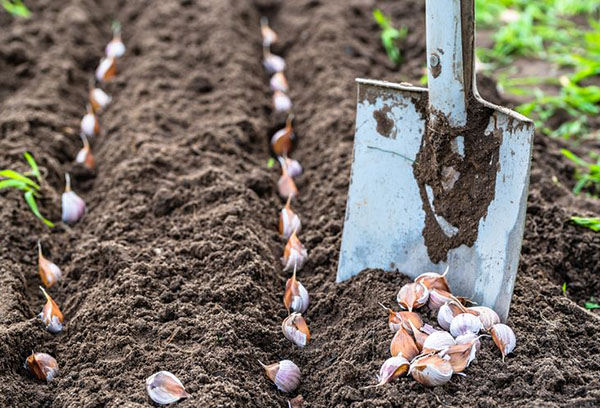
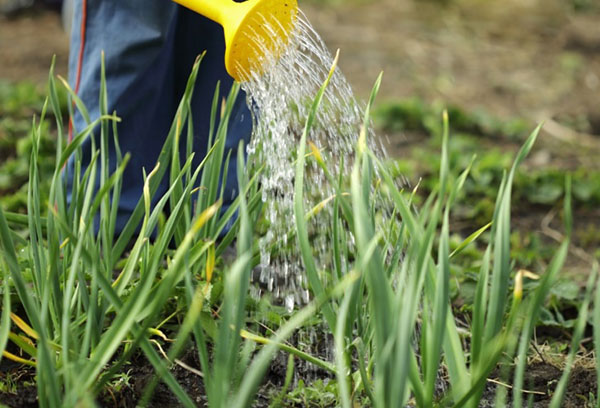
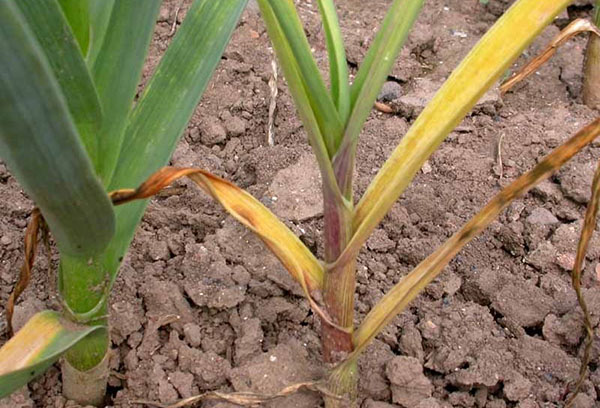
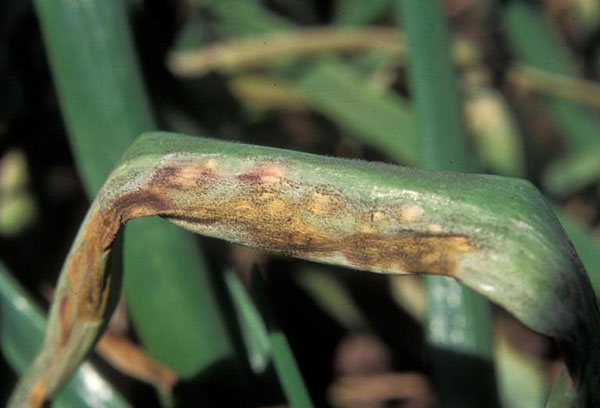
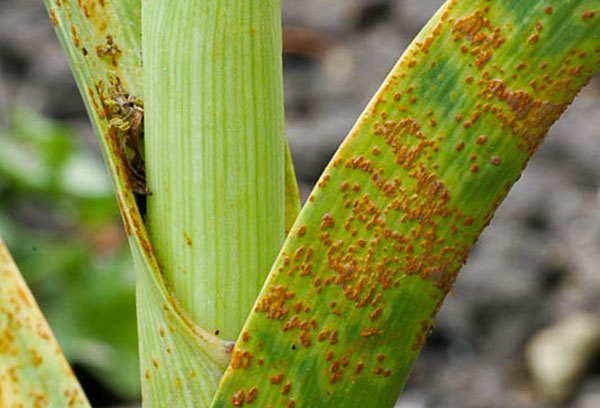
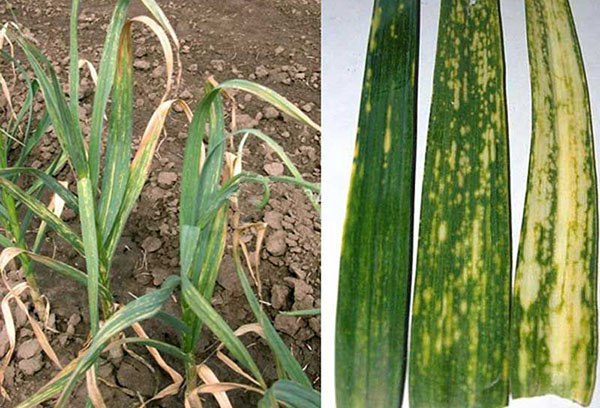
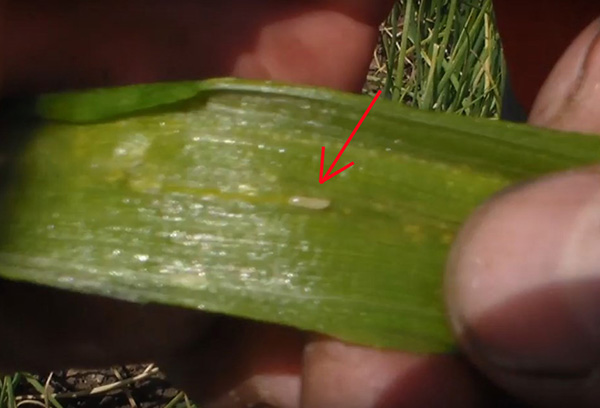
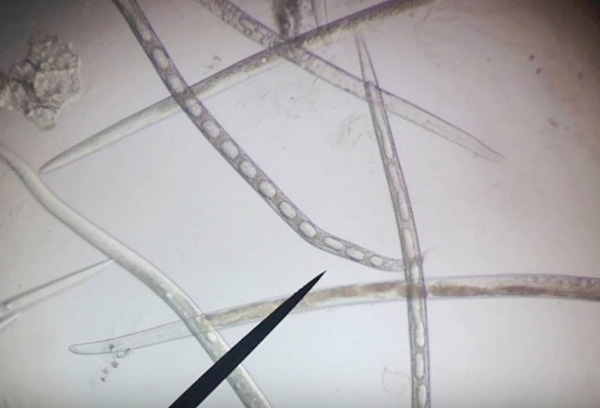
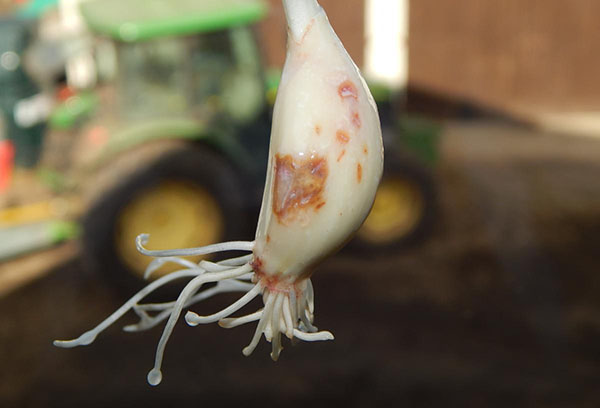
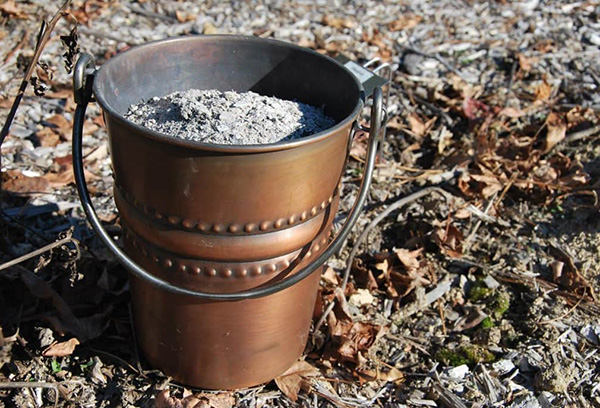
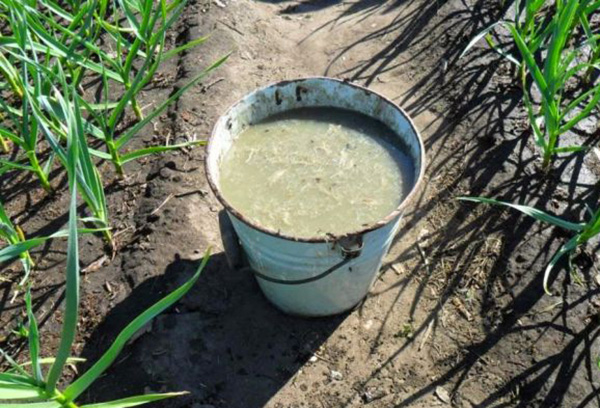
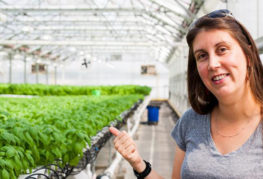
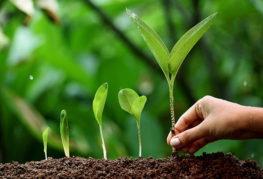
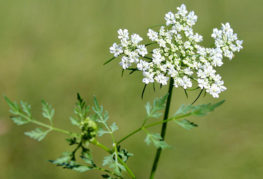
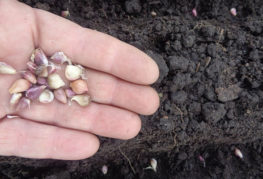
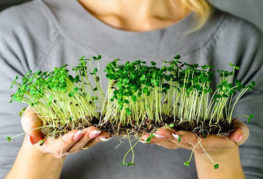

and will be published shortly.